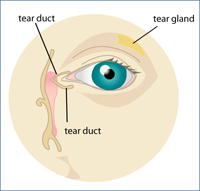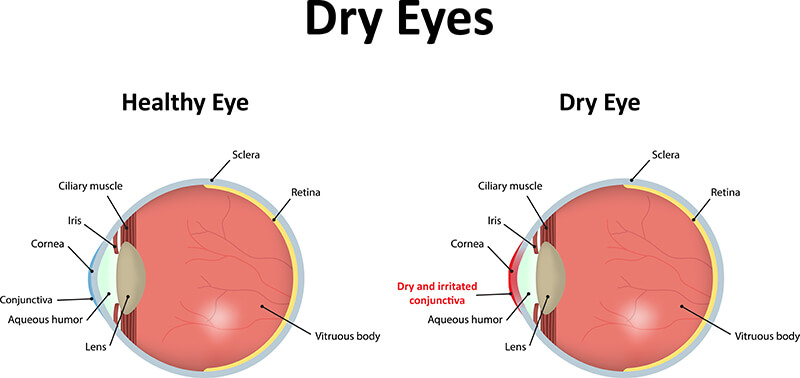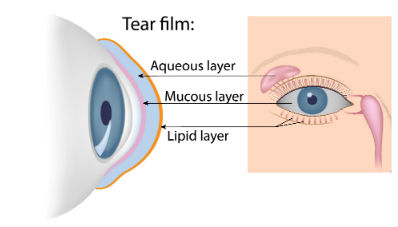Dry Eye
Dry Eye Syndrome

Dry eye is a condition caused by decreased tear production or poor tear film quality which causes tears to evaporate too fast. There are many causes of dry eye, including aging, diabetes, rheumatoid arthritis, and other medical conditions.

Dry Eye Symptoms
- Scratchy sensation in your eyes
- Sensitivity to light
- Redness
- Mucus in or around your eyes
- Contact lenses are uncomfortable
- Poor night vision while driving
- Blurred vision
Dry Eye Treatment
Each case of dry eye is as unique as the patient suffering from this condition. Some of the available treatment options include artificial tears, punctal plugs, restasis, xiidra, meibo, tyrvaya nasal spray, or serum tears. Patients with dry eye may also benefit from fish oil supplements.
Punctal plugs are best for patients who are producing low quality tears that don’t stay in their eyes. These plugs are inserted to help your eyes hold tears in for longer.
Understanding The Tear Film

It is important to understand the importance of the tear film and how this relates to the dry eye disorder. The tear film is made up of three unique layers: an oily layer, a watery layer, and a mucin layer. Small glands at the perimeter of the eyelid, called meibomian glands, produce the outer, oily layer of the tear film.
The main purpose of this oily layer is to smooth the tear surface and decrease evaporation of tears. The middle, watery layer is the largest of the three layers, and it makes up most of what we ordinarily think of as tears.
This watery layer is produced by small glands scattered through the conjunctiva, the delicate membrane lining the inside of the eyelid and covering the eyeball, and by the major tear gland, the large lacrimal gland.
The innermost layer consists of mucus produced by goblet cells in the conjunctiva. This layer allows the watery layer to spread evenly over the surface of the eye and helps the eye to remain quite moist. Without mucus, tears would not stick to the eye.
